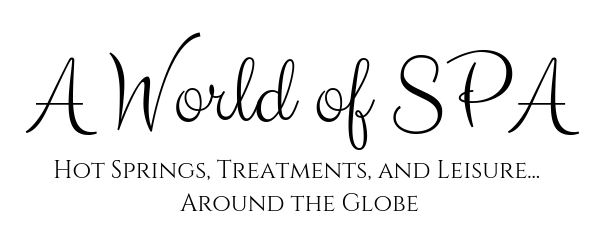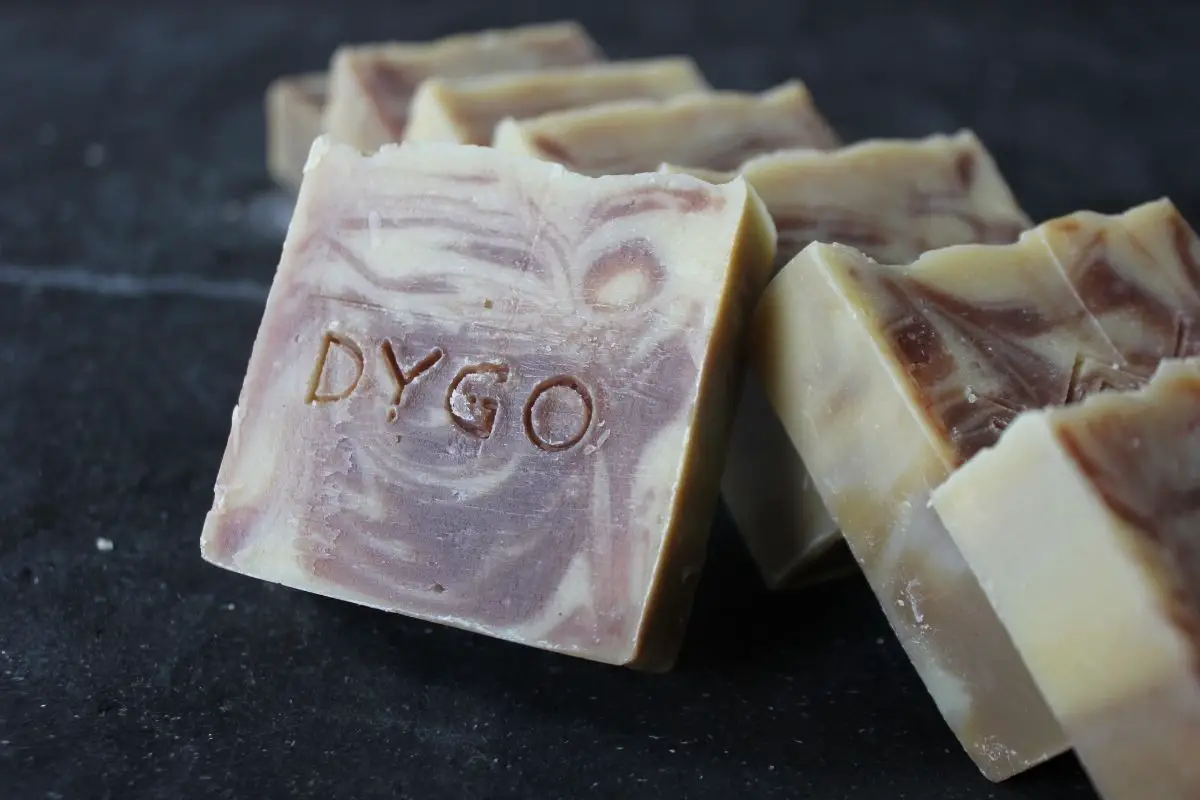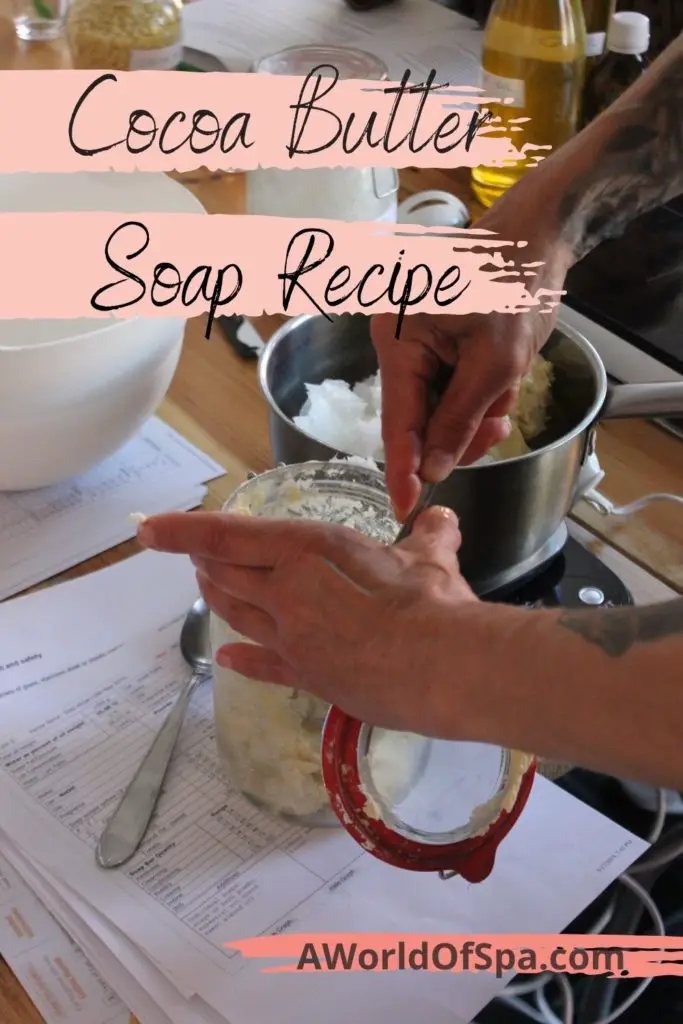
Dygo makes handcrafted, organic, natural and environmentally conscious solid cosmetics. It was born from the need to create something by hand, spread awareness about environmental issues and encourage people to switch their everyday habits to more sustainable ones. Here we will share one of our favorite cocoa butter soap recipes!
Cocoa butter is an amazing vegetable fat extracted from cocoa beans. It is mostly used in chocolate making, but it also is becoming more and more popular as an ingredient in natural cosmetics. Cocoa butter has a chocolatey smell and its melting point is just a little below our body temperature.
It is quite a luxurious ingredient to add to your natural cosmetics or soap recipes due to its high price, but it is absolutely worth it.
Cocoa butter is full of antioxidants, which help to prolong your product’s shelf life and are great for the skin. Its velvety texture and emollient properties give a very pleasant touch to your handmade soaps.
Cocoa butter is extremely moisturizing and due to its high content of fatty acids, it helps to improve the skin’s elasticity. Cocoa butter is also a great remedy for sun-damaged or aging skin. It is often used during and after pregnancy to prevent and minimize stretch marks.
In soap making even a small amount (around 2%) can make a significant difference to your recipe, as it adds stable lather, hardness, creamy feeling, and moisturizing effect to the soap bar. You shouldn’t add more than 15%, because it can make the soap very brittle. 5% of cocoa butter is a golden middle for a soap recipe.
Cocoa Butter Soap Recipe
For a chocolatey color and smell, we will add cocoa powder. This recipe doesn’t include any essential oils in order not to hinder the natural smells of cocoa butter and cocoa powder.
If you like to add your favorite essential oil or blend please feel free to make your adjustments (not more than 2% of the weight of the oils, in this case, maximum 8 g).
This recipe is for around 5 soap bars (90 g each) with 6% superfat (not saponified fats)
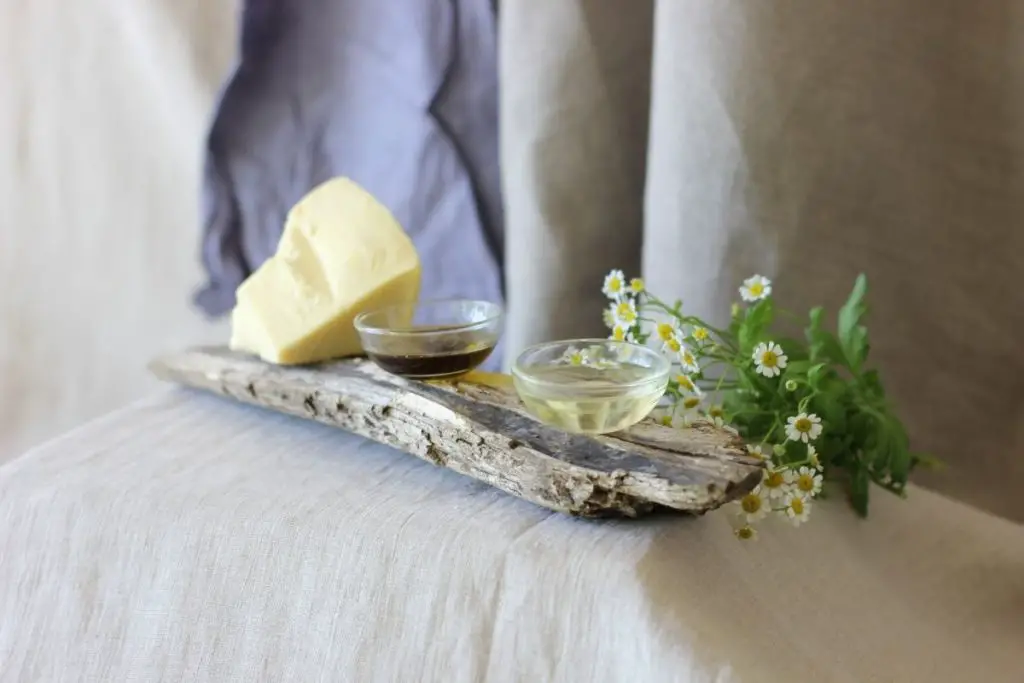
Disclosure: Some of our articles contain affiliate links (as an Amazon affiliate I earn from qualifying purchases).
You will need
- Rubber gloves
- Precision scales (0.1 g)
- Pyrex jar or beaker
- Stainless steel whisk
- Regular cooking pot (only for melting fats)
- Large plastic bowl
- Cooking thermometer
- Other 2-3 small containers
- Plastic immersion blender (aluminium can lose its shininess in the process)
- Mould for the soap (any reused plastic tub or silicone form will do)
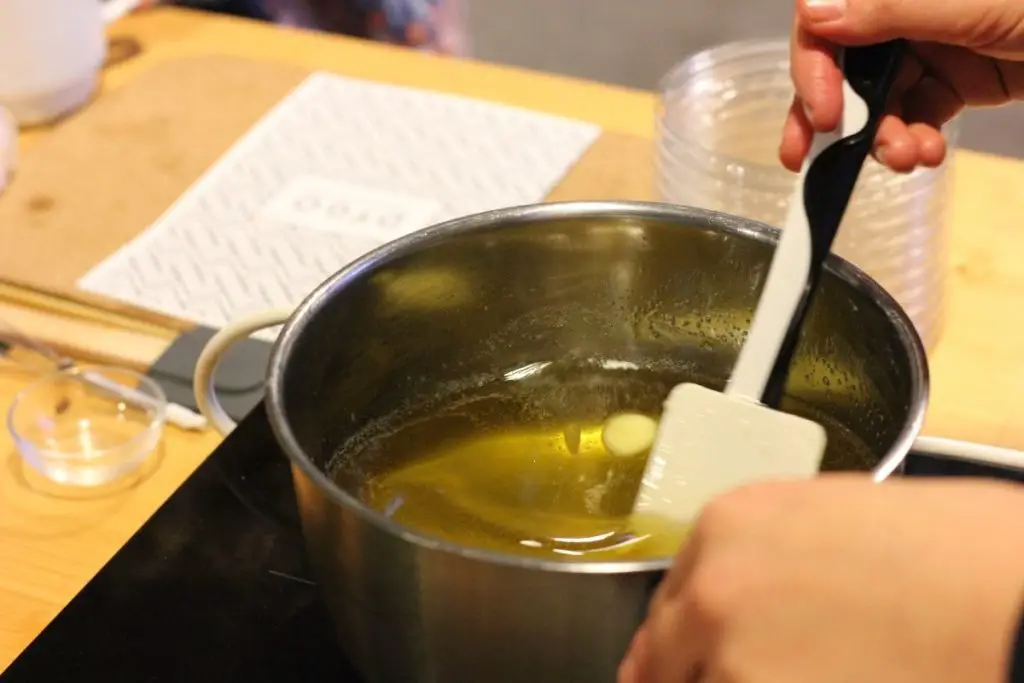
Ingredients to Make Cocoa Butter Soap
- Sodium hydroxide (caustic soda, NaOH) 54 g
- Water 144 g
- Olive oil 200 g
- Coconut oil 100 g
- Shea butter 80 g
- Cocoa butter 20 g
- Cocoa powder 12 g
Our Choice: Organic Cocoa Butter USDA Certified by Mary Tylor Naturals
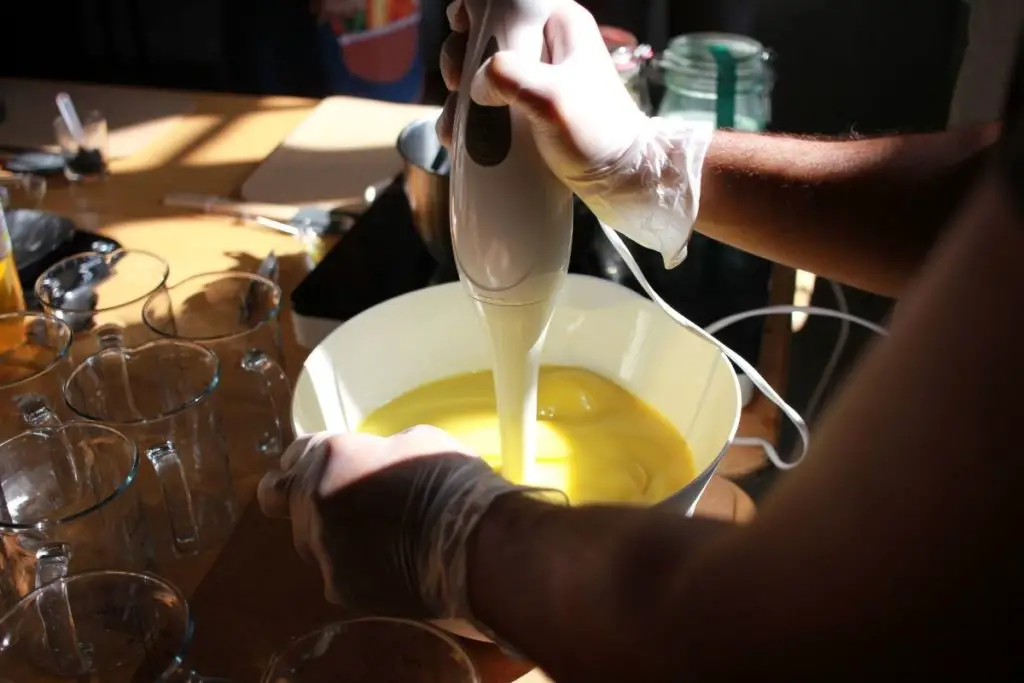
Cocoa Butter Soap Recipe – Procedure
- Weigh separately the sodium hydroxide (in a small dry container) and water (in the pyrex beaker)
- Slowly pour the sodium hydroxide into the water in a well ventilated place and mix with the whisk until the sodium hydroxide is completely dissolved (this solution is called lye). Be careful, as this will become quite hot while dissolving! Set aside to cool down.
- Weigh the solid fats (coconut oil, shea and cocoa butter) and slowly melt them in the cooking pot over low heat.
- Weigh the olive oil in the plastic bowl and the cocoa powder in a small container.
- Pour the melted fats into the olive oil, mix well and check the temperature.
- When the temperatures of the oil mixture and of the lye both reach 35-50°C (ideally 40°C) pour the sodium hydroxide solution into the oils and start blending with short bursts.
- When the mixture reaches a homogeneous and slightly creamy texture (trace), it means that the saponification reaction has started. Add the cocoa powder and blend again.
- Pour into your mould (don’t wait too long).
- Cover the mould and leave to rest for 24-48 hours.
- When the soap feels solid enough, unmould it and cut it into pieces as you like.
- Place the soaps in a dark, well ventilated area to cure for at least 4 weeks.
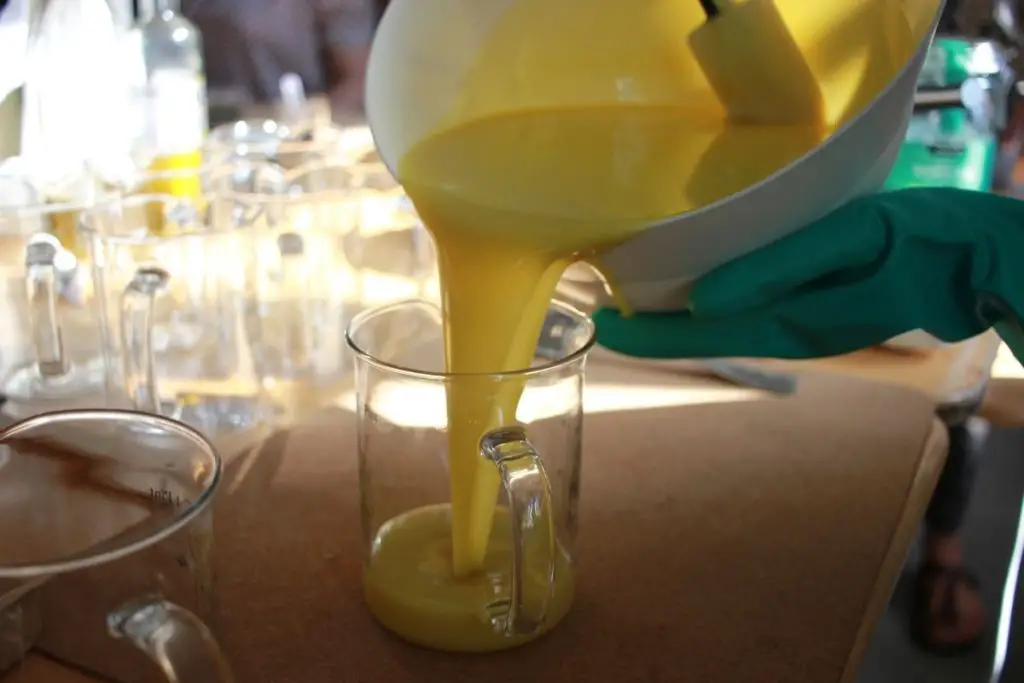

Please be extra careful when handling sodium hydroxide (caustic soda, NaOH), as it is a very alkaline (basic) ingredient and can cause burns on your skin. Wear gloves during all the making process.
There is no sodium hydroxide left in the final product when the saponification process is finished.
We hope you enjoy our recipe and please contact us if you have any questions.
Check these Homemade Cocoa Butter Soaps
More Soap Making Ideas?
Interested in more DIY Ideas?
- DIY, 4 Super Cheap Face Masks for Glowing Skin
- DIY Facial Cleanser in 6 Relaxing Steps
- Homemade Lip Balm with Beetroot, Our Vegan Recipe
- Avocado Face Mask, 5 Super Easy Recipes [+ 1 special]
- DIY, 5 easy Lip Balm Recipes
How much cocoa butter to use in soap?
In soap making even a small amount of cocoa butter (around 2%) can make a significant difference to your recipe, as it adds stable lather, hardness, creamy feeling, and moisturizing effect to the soap bar. You shouldn’t add more than 15%, because it can make the soap very brittle. 5% of cocoa butter is a golden middle for a soap recipe.
